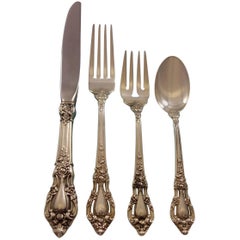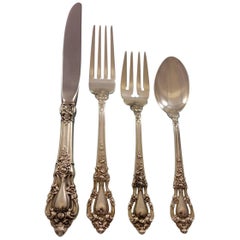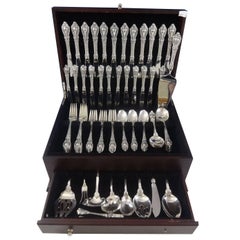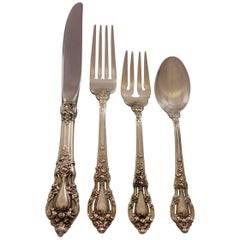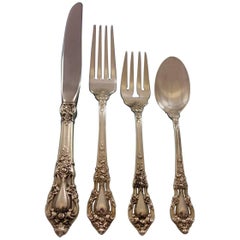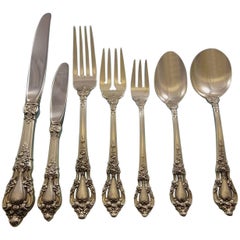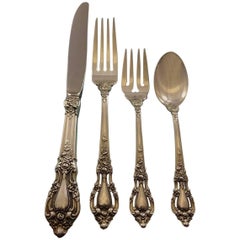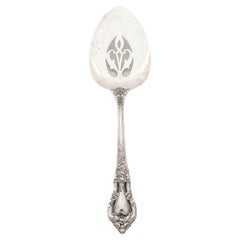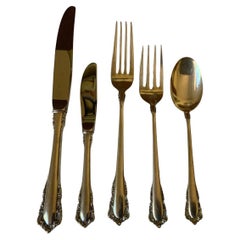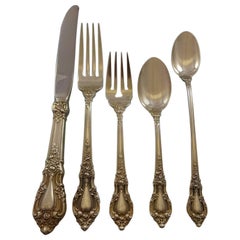Lunt Eloquence
20th Century Tableware
Sterling Silver
20th Century Tableware
Sterling Silver
20th Century Sterling Silver
Sterling Silver
20th Century Tableware
Sterling Silver
Vintage 1950s Sterling Silver
Sterling Silver
20th Century Tableware
Sterling Silver
20th Century Tableware
Sterling Silver
20th Century Tableware
Sterling Silver
20th Century Tableware
Sterling Silver
20th Century Tableware
Sterling Silver
Vintage 1950s American Sterling Silver
Sterling Silver
Recent Sales
Mid-20th Century American Sterling Silver
Sterling Silver
Mid-20th Century Tableware
Sterling Silver
Vintage 1950s American Sterling Silver
Sterling Silver
Vintage 1950s Sterling Silver
Sterling Silver
20th Century Tableware
Sterling Silver
Vintage 1950s Sterling Silver
Sterling Silver
20th Century Tableware
Sterling Silver
Vintage 1960s Sterling Silver
Sterling Silver
People Also Browsed
20th Century American Sterling Silver
Sterling Silver
Lunt Eloquence For Sale on 1stDibs
How Much is a Lunt Eloquence?
Lunt Silver for sale on 1stDibs
Founded in the early 20th century, Lunt Silversmiths became a celebrated domestic designer and producer of flatware, hollowware, serveware and giftware for generations, remaining in Lunt family hands for more than 100 years. It was the oldest continuously operating family-owned silver company in the United States.
Lunt Silversmiths was incorporated in Greenfield, Massachusetts, in 1902 as Rogers, Lunt & Bowlen Company. The firm succeeded A. F. Towle & Son Co. — later Towle Silversmiths — purchasing its tools, machinery, trademarks and goodwill. Lunt was originally managed by George E. Rogers, president and major investor; George Colby Lunt, treasurer and general manager; and William Caldwell Bowlen, vice president and supervisor of manufacturing until his retirement in 1929. George C. Lunt and William C. Bowlen were both qualified members of the staff of the defunct Towle's factory.
On April 4, 1912, the founders of Rogers, Lunt & Bowlen Company registered the manufacturer’s trademark at the federal level. In 1935 the company name was shortened to Lunt Silversmiths. In 1957 Lunt Silversmiths acquired King Silver Co. and its subsidiary Richard Dimes Company of South Boston, MA.
Lunt Silversmiths had in its inventory a wide array of flatware patterns such as Alexandra, American Directoire, Modern Victorian, Belle Meade, Carillon, Charles II, Chased Classic, Chatelaine, Colonial Manor, William and Mary, Contrast, Delacourt and many more. The United States government chose Lunt’s Embassy Scroll pattern (1981) as its official tableware in all U.S. embassies and consulates around the world.
In late 2009 Lunt sold its brand and inventory to Reed & Barton. The following year all remaining manufacturing and inventory assets at the Greenfield factory were sold at auction.
Find antique Lunt sterling silver flatware and other furnishings and decorative objects on 1stDibs.
(Biography provided by Schear Brothers)
Finding the Right Sterling-silver for You
Dining and entertaining changed drastically when we began to set our tables with sterling silver for holiday gatherings, wedding receptions, engagement parties and, in some of today’s homes, everyday meals.
Often called the “Queen of metals,” silver has been universally adored for thousands of years. It is easy to see why it has always been sought after: It is durable, strong and beautiful. (Louis XIV had tables made entirely of silver.) Sterling silver is an alloy that is made of 92.5 percent silver — the “925” stamp that identifies sterling-silver jewelry refers to this number. The other 7.5 percent in sterling silver is typically sourced from copper.
Neoclassical-style sterling-silver goods in Europe gained popularity in the late 18th century — a taste for sterling-silver tableware as well as tea sets had taken shape — while in the United States, beginning in the 19th century, preparing the dinner table with sterling-silver flatware had become somewhat of a standard practice. Indeed, owning lots of silver goods during the Victorian era was a big deal. Back then, displaying fine silver at home was a status symbol for middle-class American families. And this domestic silver craze meant great profitability for legendary silversmith manufacturers such as Reed & Barton, Gorham Manufacturing Company and the International Silver Company, which was incorporated in Meriden, Connecticut, in 1898, a major hub of silver manufacturing nicknamed “Silver City.”
Today, special occasions might call for ceremonial silver designed by Tiffany & Co. or the seductive sterling-silver cutlery from remarkable Danish silversmith Georg Jensen, but there really doesn’t have to be an event on the calendar to trot out your finest tableware.
Event- and wedding-planning company maestro Tara Guérard says that some “investment pieces,” such as this widely enamored alloy, should see everyday use, and we’re inclined to agree.
“Sterling-silver flatware is a must-have that you can use every single day, even to eat cereal,” she says. “Personally, I want a sterling-silver goblet set for 12 to 20; I would use them every time I had a dinner party. Ultimately, there are no criteria for buying vintage pieces: Buy what you love, and make it work.”
Whether you’re thinking “ceremonial” or “cereal,” browse a versatile collection of vintage, new and antique sterling-silver wares on 1stDibs today.
